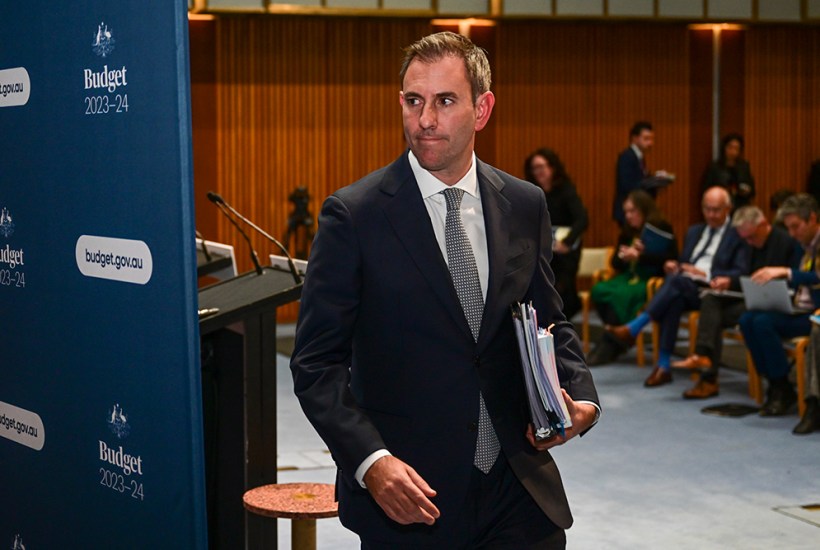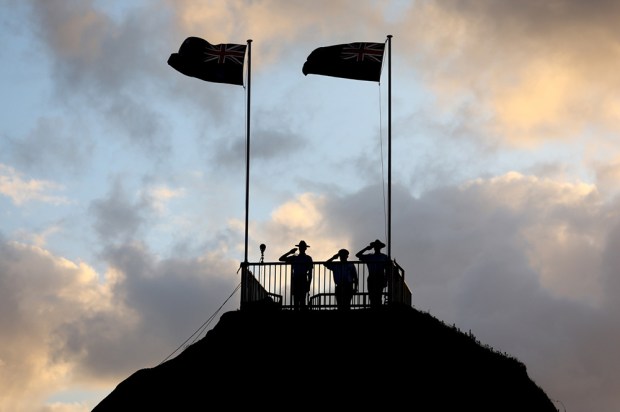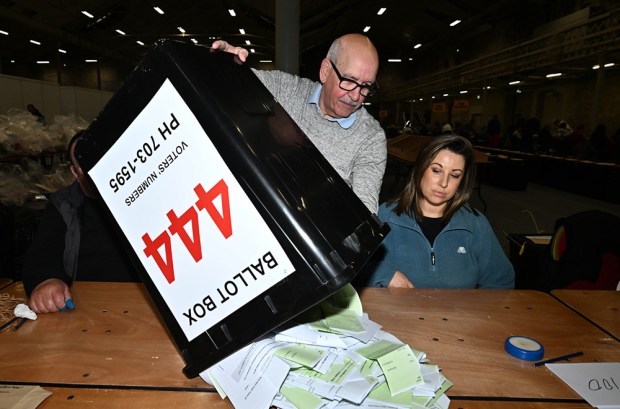The Intergenerational report is designed to provide a 40-year outlook on the Australian economy and the government’s budget. It is meant to examine the long-term sustainability of current policies and how demographic, technological and other structural trends may affect the economy and the budget. First delivered by Treasurer Peter Costello in 2002, there have been five more reports, the most recent two weeks ago by the current Treasurer. Although loaded with political and economic rhetoric, the Treasurer’s speech at the National Press Club was scant on the real details of how the government will respond to the challenges of low productivity and an ageing population.
Not that Dr Chalmers was lacking in self-congratulation. ‘A lot of effort has gone into it,’ he told the National Press Club. ‘It is steeped in evidence.’ After criticising Joe Hockey and Josh Frydenberg for their IGRs, he claimed that his iteration of the five-yearly report had been approached with ‘extra care and diligence’.
The Treasurer proclaimed the 2020s as marking ‘the end of complacency’ and claimed that the IGR ‘sets out choices that will determine whether we succeed or fail in the coming years’. This is partially true, but when he asserts that the government has been ‘taking the edge off powers bills,’ the disconnect between rhetoric and reality becomes obvious. Indeed much of the report is devoted to climate change without consideration of alternatives to the enormous costs to the economy of the government’s proposals.
Dr Chalmers falls into the trap of many modern politicians who seemingly mistake commentary for action, and celebrity for substance. Delivered with the aid of an autocue, the annoying consequence of which the speaker is looking either to the right or left, but rarely into the camera, his speech had been carefully crafted to hit all the feel-good buttons, but it told us little about the practical measures that will be taken to address what he described as our ‘immediate obligations’. Full of rhetoric like ‘turning pressure into prescriptions, options into opportunities’, it sounded like a political campaign speech without any specific promises. It reinforced the perception that the Treasurer sounds like a commentator rather than a policy-maker. The compartmentalisation of political rhetoric into a series of interconnected sound bites is a modern trend that reinforces the impression of commentary. The great political orators of the past conveyed an argument in plain language without autocues and carefully crafted sound bites that look like a performance and lack authenticity. Their rhetoric was action orientated, inspiring the populace to enjoin a cause.
While the Intergenerational report itself contains much more detail and substance than the Treasurer’s speech to the Press Club, it fails to fully outline the range of choices the nation faces. It notes correctly that ‘raising productivity and economic growth will be vital to future living standards’, but neglects the rigorous analysis required to achieve this goal. Much of the document is an analysis of the problems which have been well known for many years.
The report acknowledges that future prosperity is a product of population growth, workforce participation and productivity increases; a formula which was established in the initial 2002 document. However the discussion of productivity and population is lacking. On one hand, we are reassured that we compare favourably with other nations with slowing productivity; on the other, we are informed that ‘significant and ongoing gains require further productivity increases’. Why not compare Australia to countries where productivity is growing?
What is missing is a realistic discussion of the policies and measures required to ensure productivity growth. The economists at Treasury know that increasing productivity is by far the most significant basis for optimism about our future prosperity.
In an answer to a question about productivity, the Treasurer sought to broaden it. Seemingly he preferred to avoid the necessary discussions about taxes and industrial relations and talk about energy policy and human capital, as if these issues will address the fundamental issues.
The discussion about population in the report is unsatisfactory. It makes two forecasts that are incredible. First, it asserts that ‘Australia’s total fertility rate is expected to decline further from 1.66 babies per woman in 2022-23, before stabilising at 1.62 babies per woman from 2030-31. The fertility rate is then assumed to remain at this level until 2062-63.’
Having noted that the rate had fallen from 2.1 in the 1970s to 1.93 in 1982-83 and 1.69 in 2021-22, the report fails to consider the factors that resulted in it returning to 2.0 in 2005-06. A combination of Peter Costello’s exhortation ‘one for mum, one for dad, and one for the country’ and economic support for families resulted in the increase in the birth rate in the early 2000s. Surely, this is worthy of discussion about the reasons that the turnaround occurred, and why it was not sustained.
The assumption that the fertility rate will flatline for 30 years from 2030-31 defies the demographic experience of the past century. A cursory examination of global trends reveals that birth rates have continued to fall in the absence of sustained measures to reverse the trend. Once the birth rate drops to about 1.3 births per woman, it has, in most nations, continued to fall despite belated efforts to reverse it. A birth rate of one baby per woman results in a halving of the population each generation (absent immigration). Encouraging families who have two children to have a third has been shown to be an important factor, especially as most couples aspire to a larger family than they usually have.
Equally incredible is the claim that once net overseas migration returns to the pre-Covid levels, it will remain at 235,000 per year until 2062-63. With an ageing population, and lower birth rates, the ratio of workers to the aged will plunge dramatically. Already there are pressures to expand migration, for example, from the WA premier last week. Where are the cafe owners going to find their baristas, the farmers their fruit pickers, the aged care homes their nurses and carers, the communities their doctors? These pressures already exist. It appears that the government is unwilling to discuss the population challenges beyond 2030. A serious discussion about Australia’s future prosperity requires a full discussion about these issues, not heroic assumptions that nothing will change for three decades.
The IGR acknowledges that economic growth will fall, affecting real income per head and an increase in government expenditure and budget deficits for at least 40 years. Yet its preparedness to engage in the discussion of measures to combat the nation’s deteriorating prosperity is constrained.
Dr Chalmers may wish to tread softly in order to win the next election. He may even have his eyes on the Lodge. But he will not begin to respond to the nation’s long-term challenges by shying away from the tough policy decisions required. He spoke about having more frequent Intergenerational reports. If they are similar to this year’s iteration, that would be a waste of time.
Got something to add? Join the discussion and comment below.
Get 10 issues for just $10
Subscribe to The Spectator Australia today for the next 10 magazine issues, plus full online access, for just $10.
You might disagree with half of it, but you’ll enjoy reading all of it. Try your first month for free, then just $2 a week for the remainder of your first year.














Comments
Don't miss out
Join the conversation with other Spectator Australia readers. Subscribe to leave a comment.
SUBSCRIBEAlready a subscriber? Log in